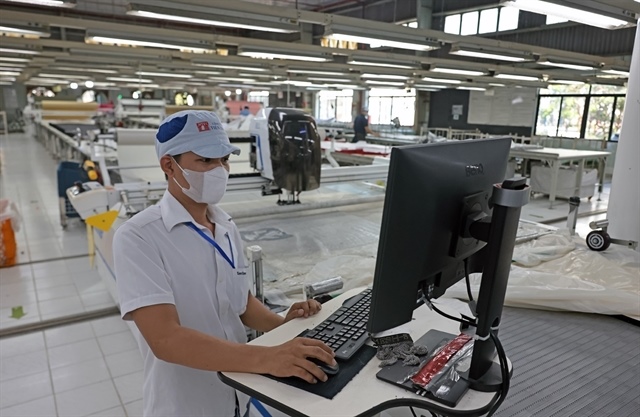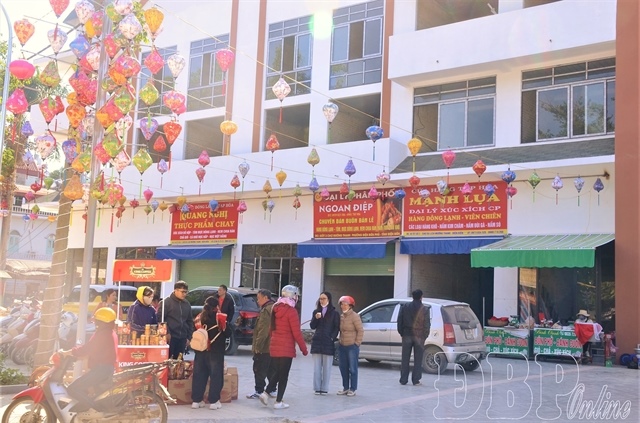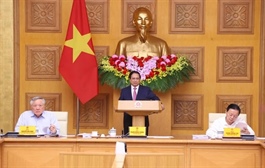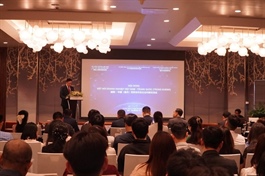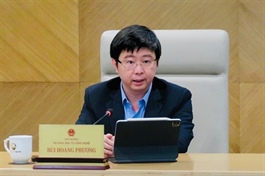Finnish expertise welcomed for Vietnam’s green development
Finnish expertise welcomed for Vietnam’s green development
Vietnam is making efforts to create stable and green employment for its citizens. Arto Satonen, Finnish Minister of Employment, talked with VIR’s Thanh Dat about his country’s experiences in these matters.
Finland is renowned for its high quality of life and diverse, attractive job opportunities. Could you share your experience in labour market development, as a reference for Vietnam?

Arto Satonen, Finnish Minister of Employment |
Indeed, the work-life balance is considered good in Finland. This is very much based on the relatively high level of productivity, which enables us to keep our annual working time at moderate levels.
Our labour market and society at large are based on well-functioning institutions. This means the rule of law, minimal corruption, and large trust in the institutions and public authorities. In the labour market, both employers and employees are well-organised, even if trade union membership is decreasing. Collective agreements set the minimum wage levels and several work quality issues for specific sectors.
We also have a long tradition of encouraging the functioning of the labour market in our political decision-making system. Providing good information on job opportunities and potential candidates and work-related training for unemployed people are good policy instruments. Also, employment subsidies for employers promote recruiting unemployed people.
It’s also important to prevent all kinds of discrimination, for example wages and other working conditions apply to domestic and foreign workforces equally. I have outlined some of the distinctive features of the Finnish labour market model, which has worked for us. Vietnam will define its own model, of course.
Vietnam is transitioning from a “golden population” phase with a young labour force to an ageing population. What do you think both workers and businesses should do to prepare for this change?
This is a challenge faced by many nations already today and in the years to come. Especially in the developed and industrialised countries, the population structure has changed. In Finland, the number of young people entering the workforce has been lower already for some years than the number of elderly people leaving the workforce. Immigration has filled this gap partially.
This is very much the motivation for my visit to Vietnam: we want to increase cooperation with your country so that motivated Vietnamese workers find suitable employers in Finland smoothly. However, this is not enough. We have to consider workforce participation not only at a certain point in time but longitudinally in terms of the length of the whole working life.
In the earlier decades, many elderly people left the workforce before their 60s. Today, we all understand that one should continue working longer. This is also motivated by longer education at a young age. The employment of the elderly population has continued to increase trendwise in Finland during the whole 2000s. And this is necessary. Also, many people work as part-timers on pensions as well. We also encourage people with partial workability to participate in the working life.
For employers, this change means that they need to keep the elderly people working longer, as the number of young people is more limited. This change needs new attitudes from us all. It is also important that the pension system gives incentives to continue at work.
Vietnam welcomed large foreign companies. Do you have any advice for Vietnam on how to prepare a skilled workforce to seize these great opportunities and drive economic development?
This is very much dependent on the specific sectors of the economy where foreign investment takes place. One of the issues that foreign investors consider carefully, is the availability of skilled workforce in the sector and region. Depending on the supply and demand of the workforce in the sector, good quality education is one key to success. This may take many years depending on the level of education.
Investments can also raise new technologies in companies, which may require new skills. Building relevant skills may take different forms, for example apprenticeships and different forms of learning at work. Educational institutes can participate in this process, but it is not always necessary to go to the classroom when learning for new skills could take place at work.
Under the shifting of labour from the public to private sector, hundreds of thousands of Vietnamese civil servants are transitioning roles. Do you have any recommendations for policymakers, businesses, and employees to help public servants leverage their strengths when joining the private sector?
Well, this is a remarkable change. There are specific conditions in Vietnam, but I could make some more general remarks on this issue.
Firstly, civil servants in general are a good workforce with some specific skills. However, the situation could be that in the private sector, the specific tasks will change. Planning types of tasks could suit well for many former civil servants, like good capacity to implement changes for others.
Secondly, depending on the educational background of the civil servants, they have a good ability to obtain new knowledge. Probably some educational measures are needed. Thirdly, it is always good to rely on the market mechanism in allocating the workforce.
- 08:00 16/04/2025


